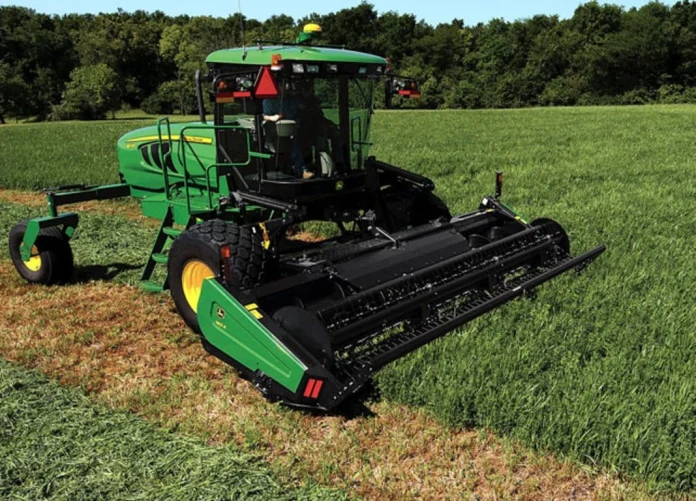In modern agriculture, efficiency and productivity are paramount. One piece of equipment that significantly contributes to these goals is the swather. Understanding what a swather is and how it benefits farming operations can help farmers make informed decisions about their equipment needs.
What Is a Swather?
A swather, known as a windrower in many parts of the world, is a farm implement designed to cut hay or small grain crops and arrange them into windrows for drying. This process is crucial for preparing crops for subsequent harvesting or baling. Swathers can be self-propelled or tractor-drawn, utilizing either a sickle bar or rotating discs to sever crop stems. A reel then helps position the cut crop onto a conveyor or canvas, forming a windrow with stems aligned above the ground.
History of the Swather
The evolution of the swather traces back to the early 19th century. In 1831, Cyrus McCormick introduced the mechanical reaper, a precursor to the swather, which allowed a single worker to cut 16 hectares (40 acres) in a day—a task that would have required five men to accomplish by hand at that time. This innovation laid the foundation for modern swathers, which have since undergone significant advancements to enhance efficiency and ease of use.
Types of Swathers
Swathers come in various configurations to suit different farming needs:
-
Self-Propelled Swathers: These machines are powered by an internal combustion engine, providing greater mobility and speed.
-
Pull-Type Swathers: Attached to a tractor via a hitch, these swathers are powered through the tractor’s power take-off (PTO) shaft.
Uses of a Swather
The primary function of a swather is to cut and windrow crops, facilitating the drying process. This is particularly beneficial in regions with shorter growing seasons, such as the northern United States and Canada, where swathing accelerates drying and ensures crops reach the desired moisture content for storage or processing.
In haymaking, swathers lay the cut hay into windrows, promoting uniform drying and reducing the risk of spoilage. For small grain crops like wheat and oats, swathers help in evenly drying the grain, which is essential for effective threshing and storage.
Benefits of Using a Swather
-
Enhanced Drying Efficiency: By spreading the cut crop into windrows, swathers increase the surface area exposed to air and sunlight, speeding up the drying process.
-
Improved Harvesting Conditions: Uniform drying achieved through swathing leads to better threshing and reduces the likelihood of grain spoilage.
-
Versatility: Swathers can handle various crops, including alfalfa, lentils, grass, fodder seeds, oats, chickpeas, clovers, rapeseed, cereals, wheat, and buckwheat.
Considerations When Choosing a Swather
Selecting the right swather involves evaluating several factors:
-
Crop Type: Ensure the swather is suitable for the specific crops you intend to harvest.
-
Field Conditions: Consider the terrain and field size to determine whether a self-propelled or pull-type swather is more appropriate.
-
Capacity and Efficiency: Assess the swather’s cutting width and speed to match your operational needs.
-
Maintenance and Support: Choose a model from a manufacturer that offers reliable service and readily available parts.
Lawnmowers are useful
A swather is an indispensable tool in modern agriculture, streamlining the process of cutting and drying crops. By understanding its functions and benefits, farmers can make informed decisions to enhance their operations and productivity.

